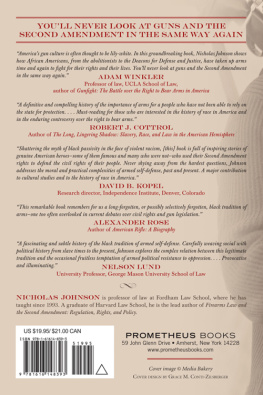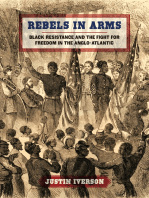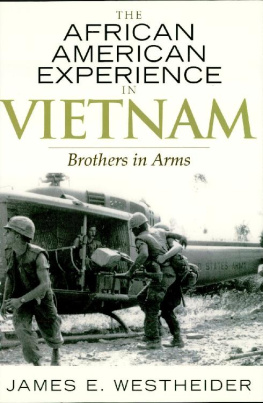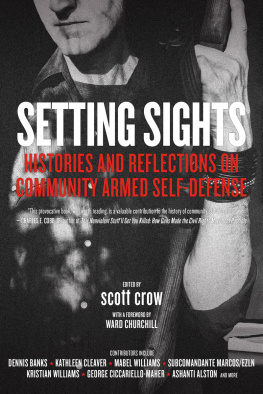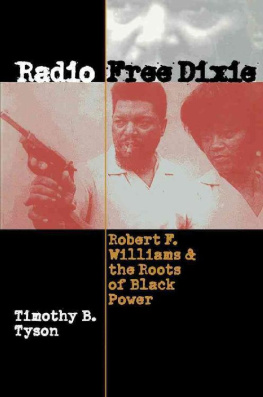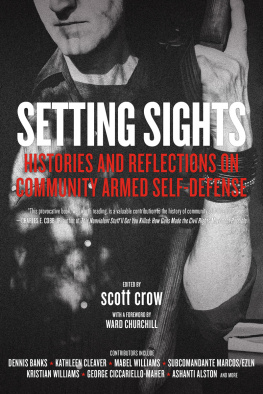
Robert Williams returned home from the army in the spring of 1946 to the same bitter irony that had confronted countless black veterans before him. They shed blood to protect democracy abroad, and bled again under racial apartheid at home.
Monroe, North Carolina, remained much the same as when Williams was a boy and witnessed a scene of petty brutality that confirmed what it meant to be on the wrong side of the color line. Turning the corner toward the courthouse, he stepped into the scene of a burly white cop arresting a woman in a fashion that captured the status of Negroes across the South. The man with a badge was Big Jesse Helms Sr., father of the future United States senator. For the rest of his life, Williams carried the image of Big Jesse flattening that woman with a sock to the jaw, and then dragging her off to jail with her dress up over her head and screaming as the concrete singed her back and thighs. As an old man, Williams the revolutionaryleaning on a cane, sporting a big, grey afrowould talk like it was yesterday about the laughter of the white bystanders and how the cluster of black courthouse loiterers hung their heads and scurried away.
The courthouse loiterers represented a particular stripe of man. Some would say that Robert Williams was a different kind of man. Maybe so. But more important is that Robert Williams was not alone. He is an exemplar, but he was not unusual. He was part of a long tradition of black men and women who thought it just and natural to answer aggression with corresponding force. They kept and carried guns and believed in self-defense as a fundamental right. Their story is obscured by the popular narrative of the nonviolent civil-rights movement. But alongside that narrative, deep in the culture, is a rich vein of grit and steel. Robert Williams was heir to that tradition. His bloodline was thick with it.
Williamss early experiences confirmed the privilege of white skin, but that did not cow him. Even though his people were no match for the power of the state and the culture of Jim Crow, when pushed to the wall, they bucked up and fought back. There is a hint of this in the Williams clan back as far as grandfather Sikes. Over the course of his life, Sikes Williams was a slave, a farmer, a reconstruction newspaper editor, a perpetual optimist, and finally, always, a realist. In the middle of a hostile environment, with powerful reasons to despair, Sikes Williams worked hard and hoped for the best for himself and his family. He also understood his responsibility in that moment where his next breath or the safety of those he loved was threatened by imminent violence. One of Roberts prized possessions was a rifle that, according to family lore, had been used by Sikes Williams in matters of life or death.
Grandpa Sikes was a hero of Roberts imagination. But the firsthand confirmation of the Williams family backbone came in another childhood episode, when word spread that a mob was forming to lynch a Negro who had fought with police. Rumor circulated that in addition to dragging the man from his cell for a hanging or burning, the mob also was planning to run some black folk out of town. The old people, and some young ones, who had witnessed the terror of the lynch mob, hid or prepared to flee.
Williamss father, Daddy John heard the rumors too. But when it was time to head out for work on the graveyard shift at the mill, he picked up his lunch pail and left the house as usual. The only difference this time was, before stepping out the door, he slipped a pistol into the pocket of his overalls. Fortunately, neither the lynching nor the chasing came that night. But Robert never forgot his fathers steel in that environment of fear and carried with him the image of that pistol, slipped quietly into the overalls pocket of a man who was not looking for trouble.
Later, when Robert Williams became an inflammatory figure, white people would say he should be more like his father, someone they considered a good Negro who kept his place. Robert knew the only difference between them was that Daddy John had the luck never to face a threat that would have turned him into a bad Negro with a gun. While the casual observer might take his kindness for weakness, even as an old man, Daddy John thanked his luck and still prepared for the worst. Always the shotgun was there, Robert remembered, it was always loaded and it was always at the door. And that was the tradition.
Robert Williams was honorably discharged from the service, but only barely so. He served at least one stint in the brig for insubordination, or, in his words, refusing to be a nigger. Back home, he faced a similar problem. Monroe in 1946 was Klan territory. And it was not long before the insubordinate soldier was in conflict with the Invisible Empire.
Bennie Montgomery was Williamss childhood friend. Bennie was wounded in the Battle of the Bulge and discharged with a metal plate in his head. He was never really the same after that. Out of the service, Bennie cycled quickly back to his ordained place in the Jim Crow Southinto the fields, chopping and shoveling. Home only a few months, he got into a scrap with his white employer. With the
The Klan threatened to lynch Bennie. So the authorities moved him from Monroe. He was quickly convicted of murder and executed. But the execution of Bennie Montgomery did not satisfy the Klan. When the state shipped his body back home for burial, the Klan proclaimed that the remains belonged to them. They planned to drag Bennies body through the streets.
Before that could happen, the black men of the community met at a barbershop and worked up a plan. By the time the Klan motorcade reached the Harris Funeral Home to seize Bennies body, forty black men with rifles and shotguns were already in place, hidden where the cover allowed. The motorcade stopped. The black men showed themselves and leveled their guns. Unprepared for a real fight, the Klansmen drove away and Bennie got a civilized burial.
Robert Williams was one of the men who drew down on the Klan that night. That same year across the South, black veterans marched and protested and armed themselves against reprisals in Birmingham, Alabama; Decatur, Mississippi; and Durham, North Carolina. Among these men was a young Medgar Evers, home from the army and pressed to the edge of an armed confrontation at the Decatur courthouse, where a mob rose against his attempt to register to vote. Robert Williams was not alone.
Monroe had a slippery hold on Williams. After marrying Mabel and seeing his first son born, he ranged north to Detroit for work on the assembly lines. But almost as soon as he was gone, he talked of returning home. By 1950, he had moved the family back south and enrolled under the GI Bill in the North Carolina College for Negroes in Durham. He wanted to be a writer. A year before finishing, with his government money spent, Williams moved north again for work. He and Mabel sublet a little apartment on Eighty-Eighth Street, in New York City. The building was not generally available to blacks, but the Williamses got in through some radical unionist friends Robert had met at work. The white neighbors were less enlightened than Williamss progressive coworkers. Retreating from the hostility, Mabel stayed in the apartment most of the time. She kept a 9-millimeter pistol close by. It was not a place to make a home, and the Williamses soon left, with Robert chasing work wherever there was promise or rumor of it.
In 1954, induced by promises of training in radio and journalism, Williams enlisted in the Marine Corps. Posted at Camp Pendleton, California, he was promptly installed as a supply sergeant. The promise of training in journalism evaporated with the explanation that blacks did not work in the Information Services. Angry and defiant, Williams fired off missives to Congress complaining about the bait and switch. Then he sent a nasty letter and a telegram to President Eisenhower, threatening to renounce his US citizenship in protest of his mistreatment. This ultimately was enough to earn him a dishonorable discharge from the Marines and a train ticket back to Monroe.
Next page
